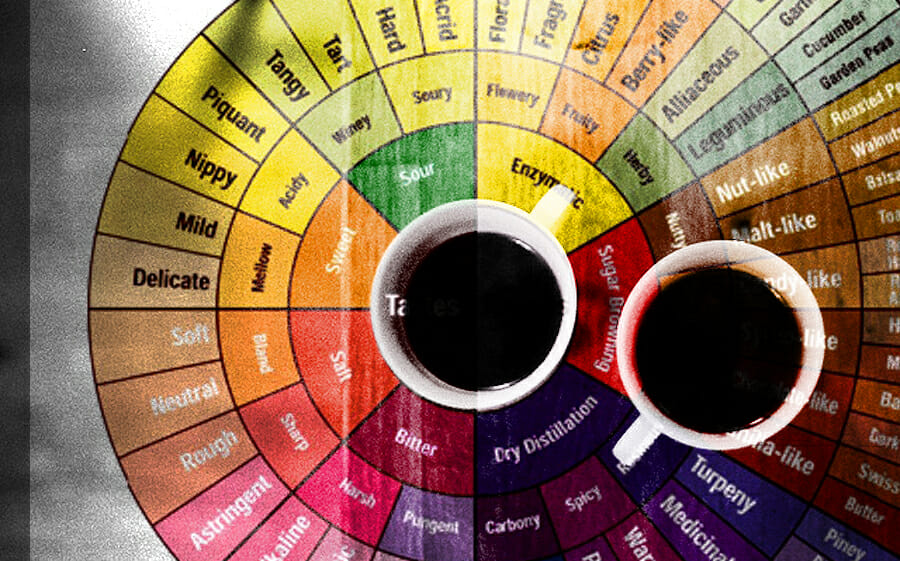Having a common vocabulary and knowing the coffee terms, is clutch when it comes to finding, enjoying, and talking about coffee you love. When you’re buying some good coffee, you can look for the characteristics you know you like and you can have conversations with other coffee folks who are familiar with the same vocabulary. There could be a whole dictionary devoted to coffee, but we’ll talk about the four terms you better know and how you can experience these characteristics at home.
The 4 Biggies You Better Know
1. Aroma: The aromatics of a coffee influence a coffee’s flavor profile. The aroma comes from the gases that are released while brewing the coffee. Stick your nose above your cup, take a big whiff and you’ll get a good hint at whats to come.
2. Acidity: Acidity is the most often misunderstood coffee term. It has nothing to do with bitterness or an acidic feeling in your stomach. Acidity in coffee is a good thing! It is what gives a good coffee sparkle and keeps it from tasting dull. It can be described as bright, winey, clear, ect. Acidity doesn’t have a flavor, but you can think of the feeling that your tongue has when you bight into a green apple or drink lemon water. That’s acidity. When you get very high acidity, it might reach unpleasant levels and register as sourness.
3. Body: Body is the heaviness of the coffee. Think of body in terms of milk. Whole milk is much heavier on the palette than skim milk, much in the same way that coffee with a a lot of body is heavier on the palette than coffee with a light body. Very light roast and very dark roast coffee tend to have less body, but the body is also determined by the type of coffee as well.
4. Flavor: Flavor is what you taste in the cup. Flavors vary on an extremely wide spectrum from lemon to to blueberry to chocolate to pipe tobacco. Everyone registers flavors differently, so if you think you’re picking up flavors of apricot, you’re right. There are flavor wheels that can help you decipher the flavors you’re tasting.
Putting the 4 Characteristics to Practice (Yes, You Can Do It)
The best way to learn about coffee is to taste it for yourself. In many cases, none of these characteristics are so overwhelming that they are easy for any coffee drinker to just pick out. You pick up a coffee, drink it, and think “hmm this tastes like…coffee.” This is a tip that will change all of that for you. Brew up two different really good coffees. We recommend using a Hario dripper for this, but just brew anyway you can. Now taste the coffees side by side. Having to coffees to compare makes it much easier to pick out those delicate flavors or experience other characteristics like body and acidity.
Choosing the Right Coffee
You need to get some freshly roasted coffee. Coffee starts losing it’s flavor after it’s been roasted, so if the coffee has been sitting on the shelf for awhile, don’t even try. A single origin is best. Blends mix many beans from many countries/farms, so you’re missing out on the individual characteristics of the beans that went into the blends. Sticking with a single origin is best to start with. Note: If you’re drinking dark roasted coffee, this isn’t going to work for you. Dark roasted coffee eliminates much of the acidity and many of the delicate flavors.
Want to make it easy? Take our quiz, and get your Mistobox subscription filled with specialty coffee curated to your taste.
For more awesome coffee ideas check out our coffee cocktail recipes or our iced coffee drinks.
Get your Mistobox coffee subscription today


